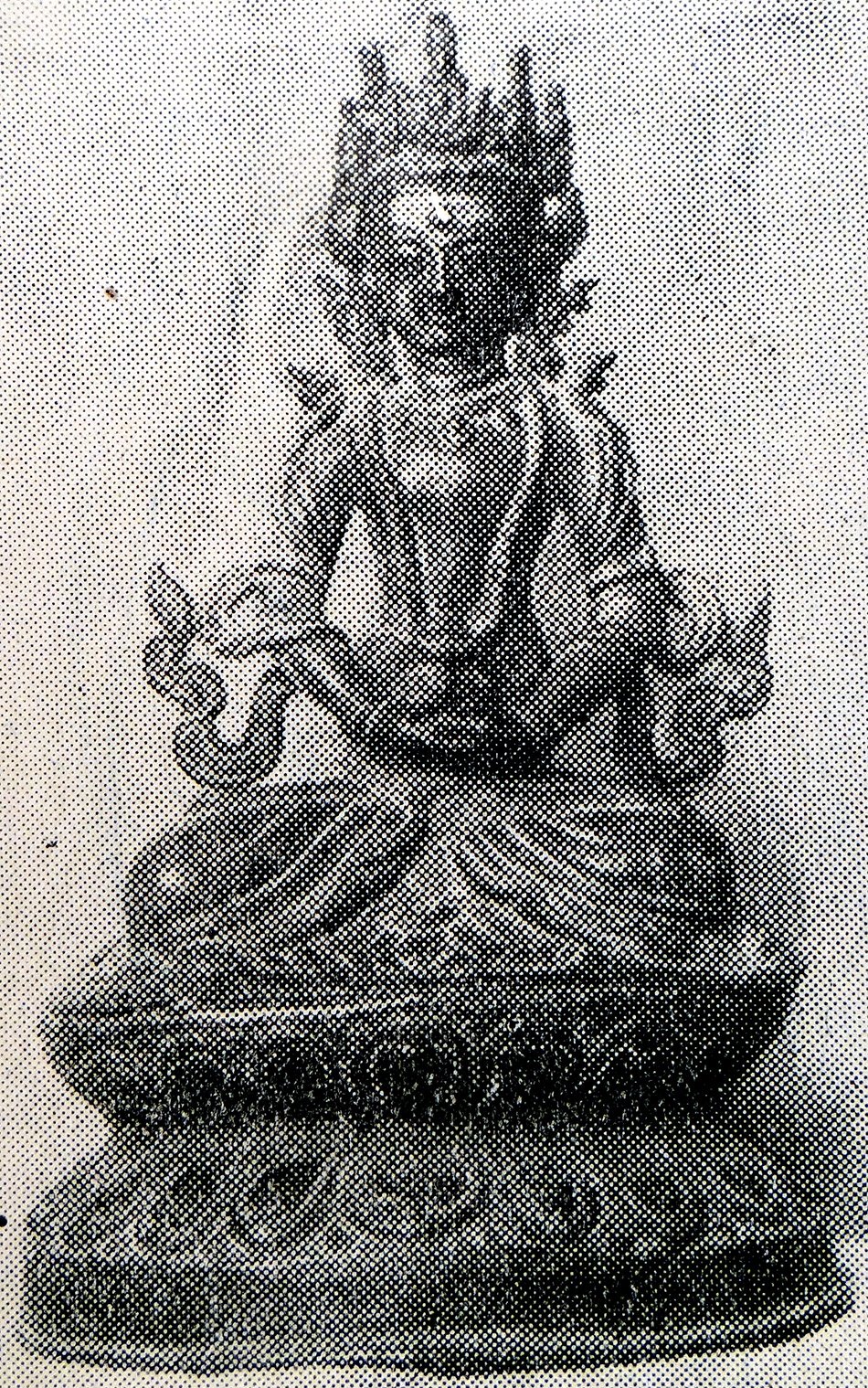The Indian Buddhist Iconography
by Benoytosh Bhattachacharyya | 1958 | 51,392 words | ISBN-10: 8173053138 | ISBN-13: 9788173053139
This page contains an iconography image of Manjushri Vajraraga and represents figure 75-76 of the book Indian Buddhist Iconography, based on extracts of the Sadhanamala English translation. These plates and illustrations represent either photographs of sculptures or line-drawing reproductions of paintings or other representations of Buddhist artwork.
Figure 75-76 - Mañjuśrī Vajrarāga
 Figure 75: Vajrarāga (Baroda Museum) |
.jpg) Figure 76: Vajrarāga (Nepalese drawing) |
Vajrarāga Mañjuśrī is also known by the two names of Vāk and Amitābha Mañjuśrī showing his allegiance to the Dhyāni Buddha Amitābha of red colour. Vajrarāga is one-faced and two-armed. His two hands are joined on his lap forming what is called the Samādhi or the Dhyāna mudrā. In this respect he is identical with the Dhyāni Buddha Amitābha whose effigy he bears on his tongue. He differs from the Dhyāni Buddha in respect of his ornaments and dress. Images of this form of Mañjuśrī are not altogether rare in India or in the Buddhist countries of the North.
Fig. 75 illustrates a metal statuette of the god in the Baroda Museum. Fig. 76 illustrates a Nepalese drawing. Vajrarāga is known in Tibet and China.
